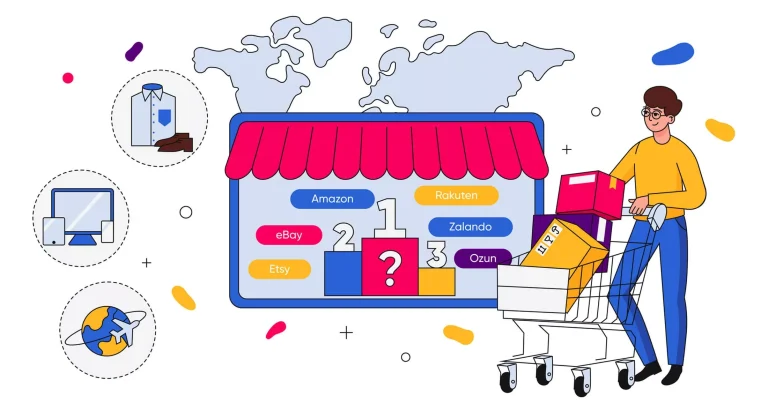Top Secrets to reduce the cart abandonment for your Shopify store
Nowadays, shopping on e-commerce platforms like Shopify is increasing day by day. Besides, the problem of Shopify cart abandonment is also increasing. According to statistics from the Baymard Institute, exactly 69.82% of online shopping carts are abandoned. Cart abandonment is a pain for every merchant, and those who cannot keep this rate low will face poor sales performance. Below, we’ll dive into some strategic methods to reduce cart abandonment for your Shopify store.
What is Shopify cart abandonment and How to Calculate it?
Cart abandonment transpire when customers who are shopping online on a Shopify store add items to their cart but leave the site before making a purchase. E-commerce businesses that follow cart abandonment do so by determining the percentage of customers who add items to their cart compared to the rate of purchase.
Here is the formula to calculate the cart abandonment rate for your Shopify store.
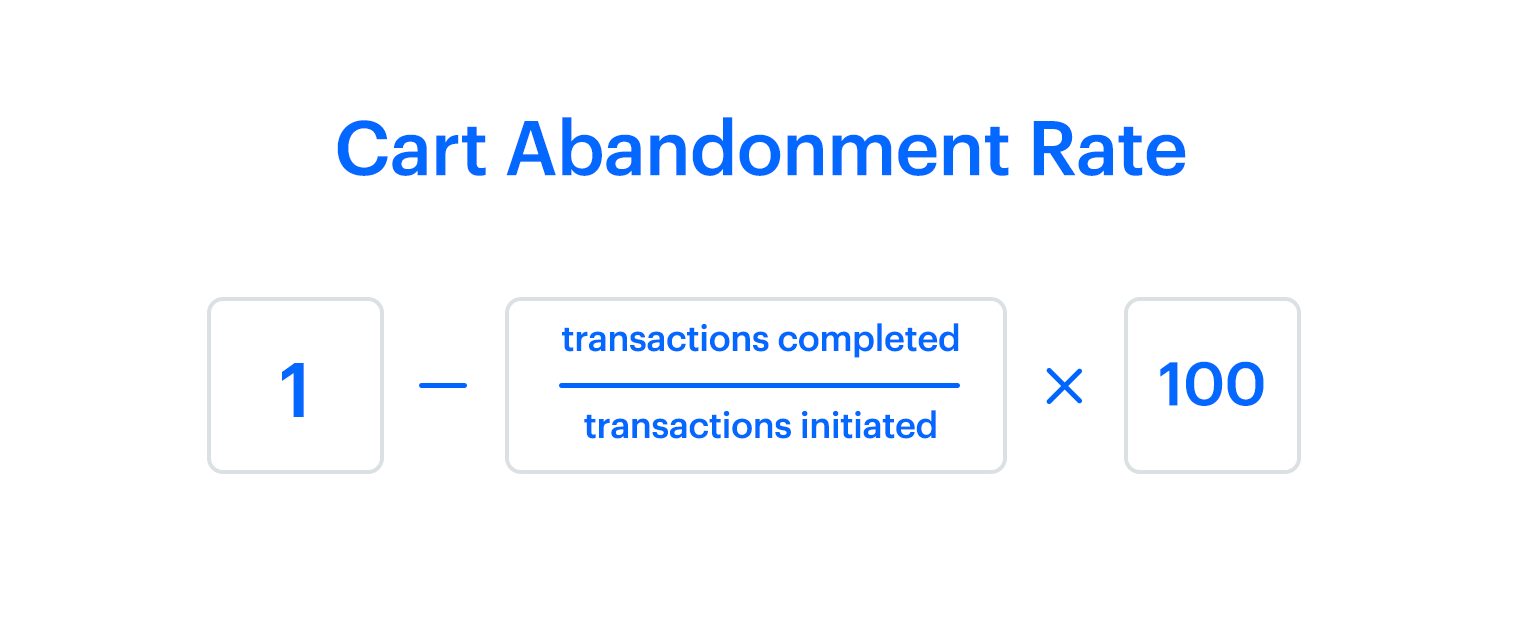
To calculate this rate for your Shopify store, go to admin dashboard > Analytics > Dashboard. Then navigate to the “Online store conversions” section to see your performance. “Added to cart” shows the total number of carts initiated while “session converted” shows the number of completed transactions.
How to tell if you have a high cart abandonment rate?
According to statistics provided by Optinmonster, cart abandonment alter considerably by industry and product. That’s why it’s feasible to arbitrarily conclude you have a low or high Shopify cart abandonment rate without comparing it to the average in your niche.
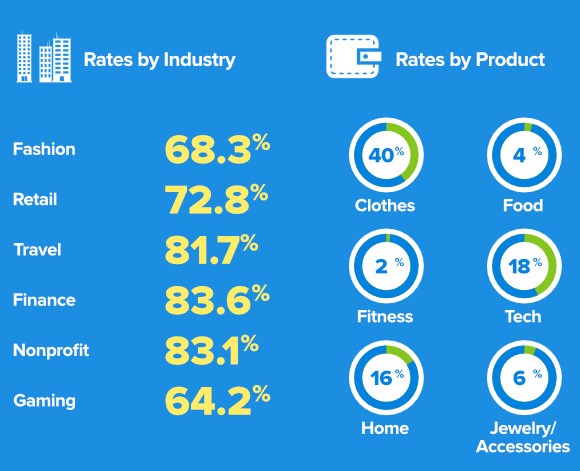 If your store’s cart abandonment is higher than average, it looks like there’s plenty of room for improvement! But to reduce cart abandonment for your Shopify store, you must first understand its origins.
If your store’s cart abandonment is higher than average, it looks like there’s plenty of room for improvement! But to reduce cart abandonment for your Shopify store, you must first understand its origins.
Reasons why shoppers abandon items in their shopping cart
Understanding why customers leave your checkout page in the first place is key to reducing your deserted cart count. According to the Baymard Institute, the top reasons why online shoppers abandon their cart without making a purchase:
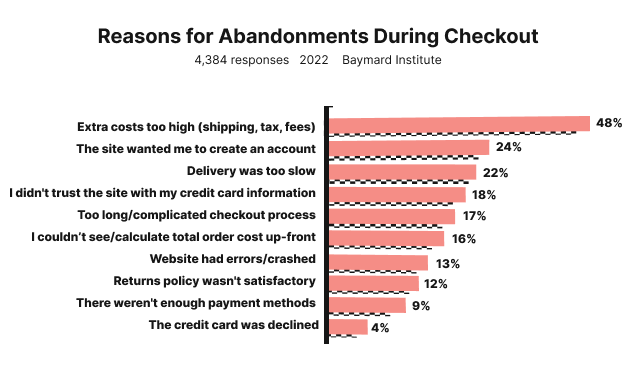
- Extra costs too high (48%): Shipping costs can be a big hit for customers, along with other fees like taxes and handling fees. These surcharges can sometimes be nearly as expensive as the item itself. This can turn customers away and cause them to abandon their cart.
- An account is required (24%)
- Delivery was too slow (22%): Today’s customers await fast delivery. With so many giant e-commerce stores offering next-day or same-day shipping, you could lose potential customers if your delivery takes more than a few days.
- Website distrust (18%): Today’s customers care enough about problems like digital theft and identity scam. If a website seems unstable, many customers will abandon their shopping cart when credit card or other personal data is requested at checkout.
- The checkout process is too long/complicated (17%): Long forms with many different fields and data requirements are another factor for customers at checkout.
Ways to Reduce Shopify Shopping Cart Abandonment
No matter how excellent your product or service is, cart abandonment will always exist. In fact, a lot of Shopify merchants have lost a lot of revenue because they couldn’t keep this ratio low.
Here are our best practices for reducing cart abandonment to grow your Ecommerce business.
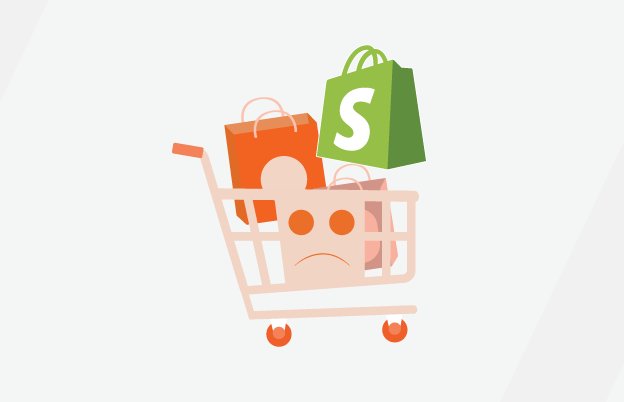
1. Use a trusted e-commerce platform
The journey to recovering lost Ecommerce revenue doesn’t start at the checkout page. The entire user experience affects the customer’s ability to complete their purchase. That success stems from choosing the best e-commerce platform.
Check if your e-commerce platform is responsive. Cart abandonment rates are at their highest for tablet and mobile users. If your load times are taking too long or the page needs to squeeze and squeeze to make sense, you’re delivering a poor mobile experience — and potentially contributing to higher abandonment rates. Finally, consider any app that can reduce cart abandonment across your entire e-commerce site.
For example: Keep Cart is available through the Shopify App Store. It remembers the items a customer has added to their online shopping cart. If they leave your site and return at a later date, they will have the items saved and ready to buy.
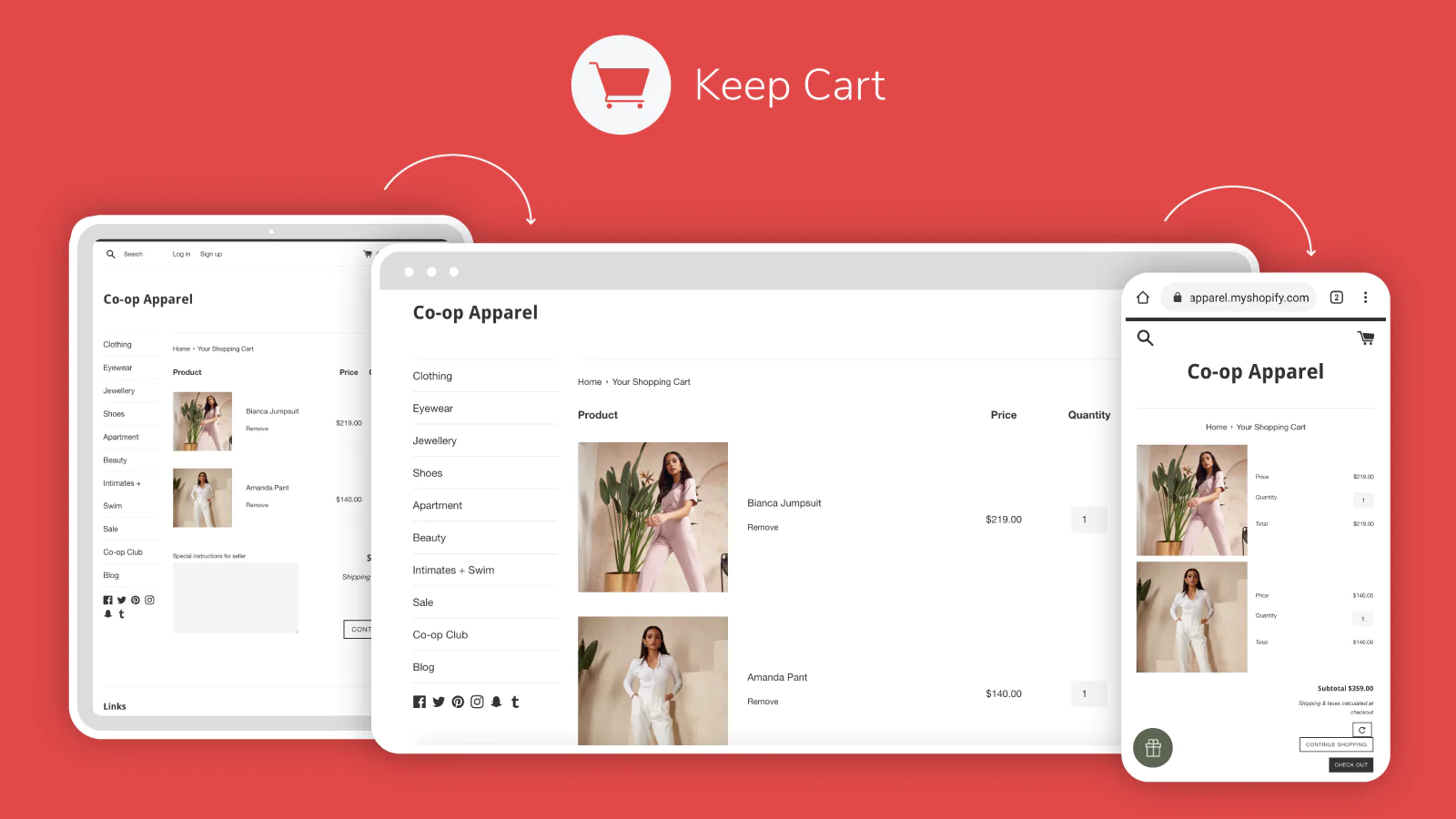
2. Simplify the payment process
Ecommerce shoppers are now much more impatient as they can switch to hundreds of alternatives within a few clicks. Once they feel like you’re wasting their time, you’re losing a potential customer to your competition.
We know there’s a lot of essential information you need to gather before you sell your product. More importantly, however, you must design the checkout process as direct as possible.
Make it short and clear
While most companies have a 5-step checkout process, some can take more steps and still have a good conversion rate. However, if you don’t have loyal customers yet, we recommend keeping the whole process under 4-5 stages.
Ideally, your checkout page should include the following pieces of information:
- Payment procedures
- Shipment Details
- Payment details
- Review and confirm
Check in as a guest
We know that you need to collect customer emails to keep them updated so they will come back for their next purchase. However, make sure that “create an account” is optional and that they can pay instantly without having to do so. I mean you can incentivize customers to sign up for a new account, perhaps a “Sign up easy, earn instant rewards” line like Paula’s Choice could be helpful.
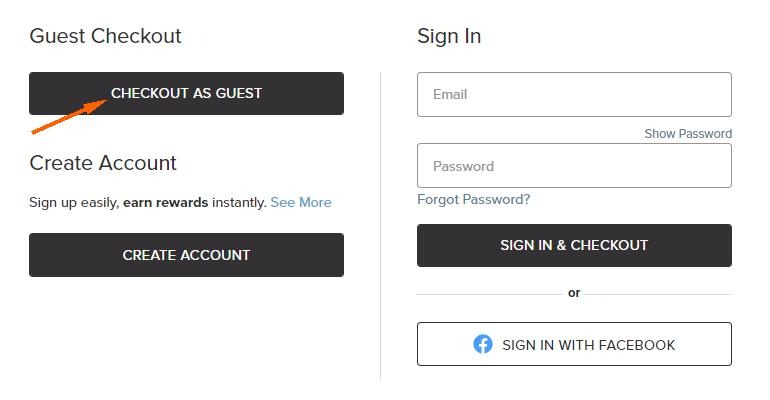
Use clear images, videos and detailed product descriptions
Provide at least one clear product image to give your shoppers a “real world” idea of what the product will look like when they receive it. If your product is used to demonstrate its use, include a short video. Describe the product, hitting the points that you think shoppers will be most interested in.
For example: Nalgene not only has descriptions, but also specifications tabs and extensive details on the product.
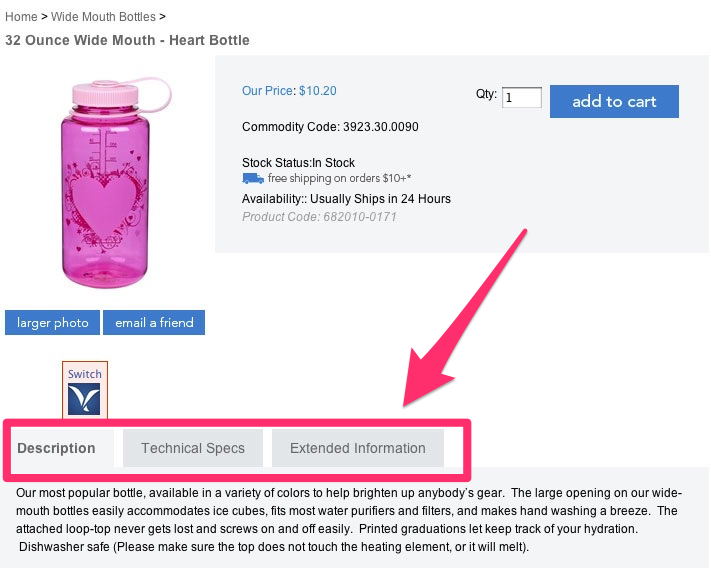 3. Offer free (or low-cost) shipping
3. Offer free (or low-cost) shipping
Unexpected taxes, fees, and shipping costs are the most common reasons shoppers abandon their carts. For context, 82% of shoppers say they’d rather get free shipping than fast shipping.
For some e-commerce stores, especially new or small ones, free shipping for the entire website catalog is not always a sustainable option. So instead, offer free shipping for carts that meet the free shipping threshold.
For example: Jaxxon is a luxury menswear retail chain that clearly shows shoppers how much they will have to spend to unlock free shipping right from the product page
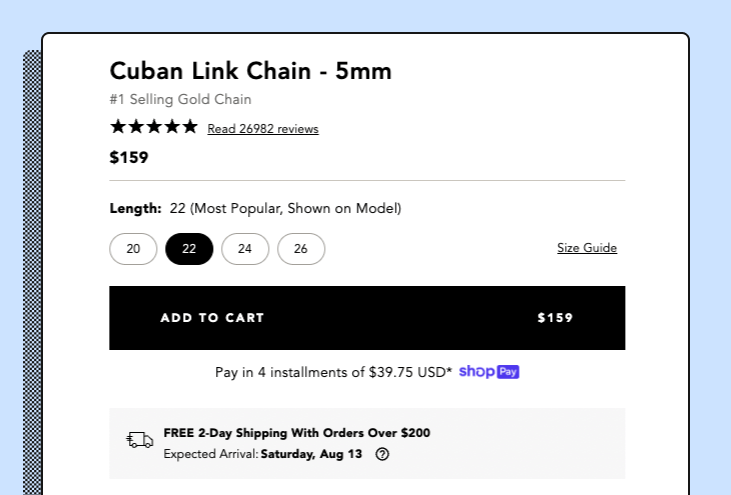
4. Offer incentives to shoppers who create an account
Offer guest checkout as an in-cart option, but entice your online shoppers with incentives if they create an account (such as 10% off a future order). Timely rewards, discount codes, and other incentives can motivate customers to make a purchase.
For example: Parade is a DTC lingerie brand known for its referral programs, use the refer-a-friend program to get a discount code into the hands of people who haven’t shopped at your store.

5. Offer buyers multiple payment options
A simple way to reduce cart abandonment is to offer as many payment options as possible. If customers visit your checkout page only to find that they have limited options for payment – especially if those options require them to disclose personal information – they are more likely to give up. purchase.
If you have a Shopify store, you can use Shopify Payments to easily accept a variety of payment options like credit cards, Apple Pay, and Google Pay without any third-party fees.
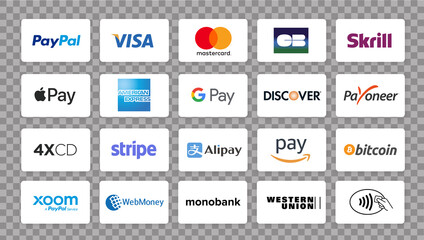
6. Add a Chatbot to Your Shopify Store
Incorporate live chat, including proactive chat campaigns, as a way to help your customers with the checkout process and increase sales. A whopping 79% of stores that have live chat enabled report its positive impact on their sales and customer experience. Every store should enable live chat for support as it is a quick, attractive option for customers, especially when they are considering a purchase.
For example: Socialreply, you can add a live chat on your website to let customers know they can contact you when they want more advice on an item or if there are any errors. .
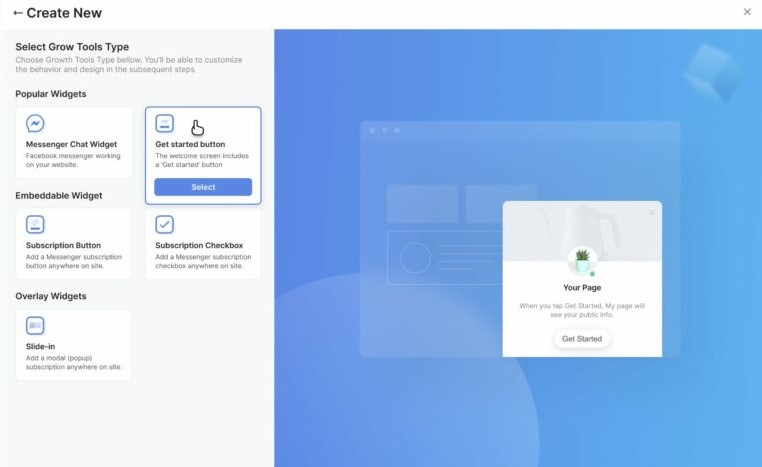
Conclusion
Cart abandonment is a pain for every merchant, and those who cannot keep this rate low will face poor sales performance. Therefore, the abandoned cart strategy is crucial to turning Shopify visitors into loyal Ecommerce customers.
After this article, we hope our above methods can help you reduce cart abandonment rate for your Shopify store. If you have any IT technical problems, connect with ONEXT DIGITAL to learn more about our Shopify development services.



